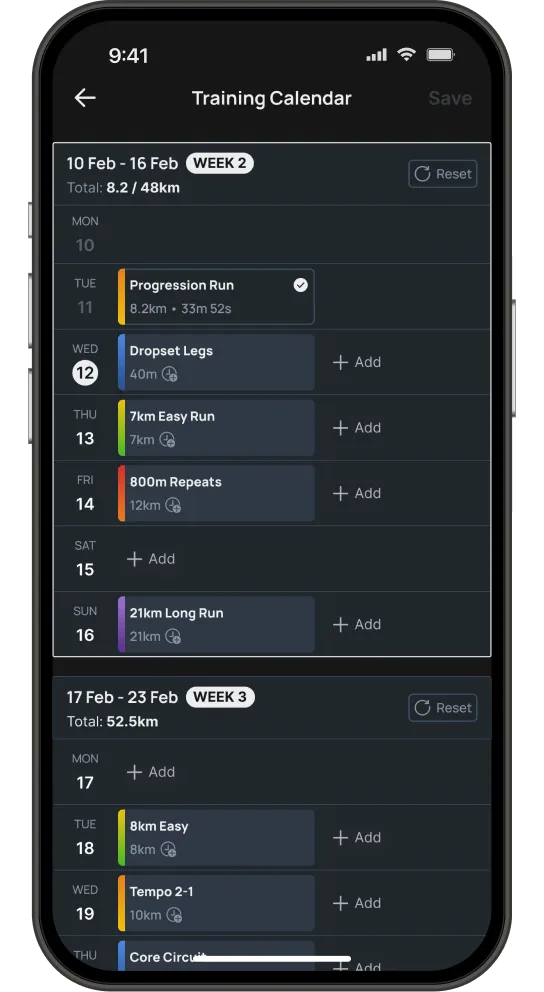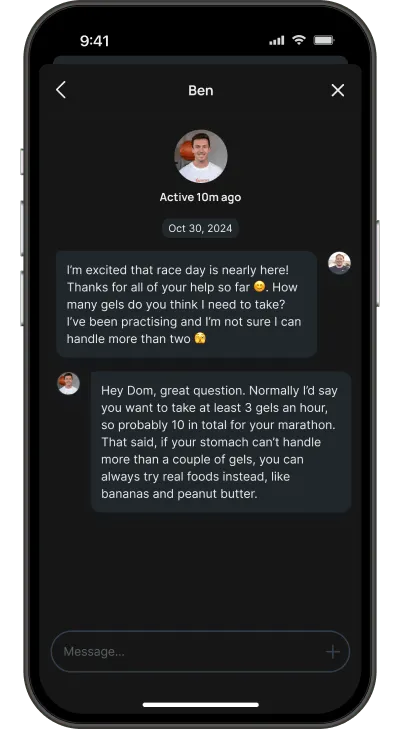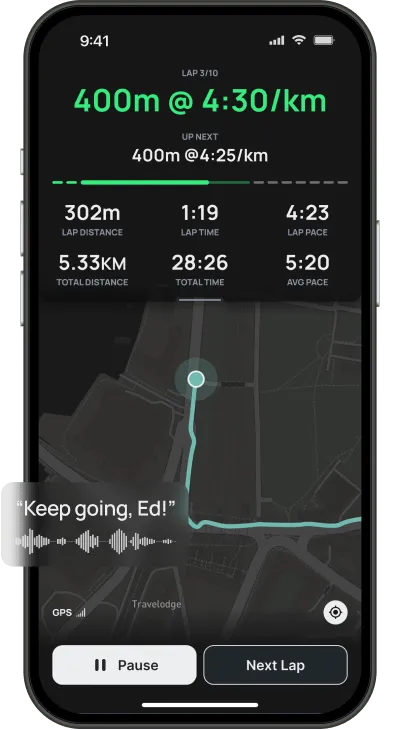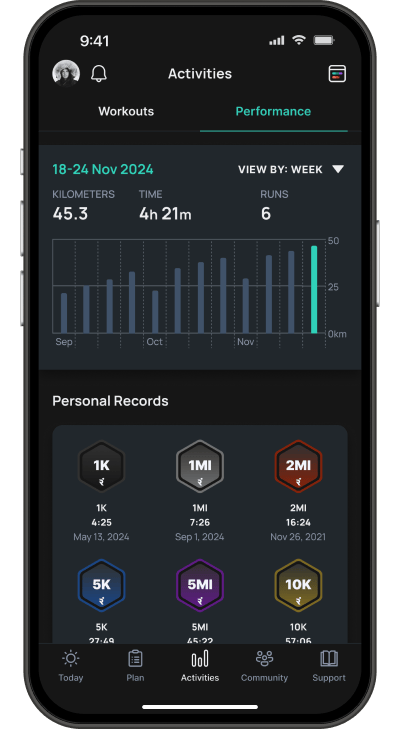Why choose our Pilates training plan?
Pilates gives you the strength, control, and posture to power every run. With the right plan, you’ll build a stronger core, reduce injury risk, and feel the difference in every stride.
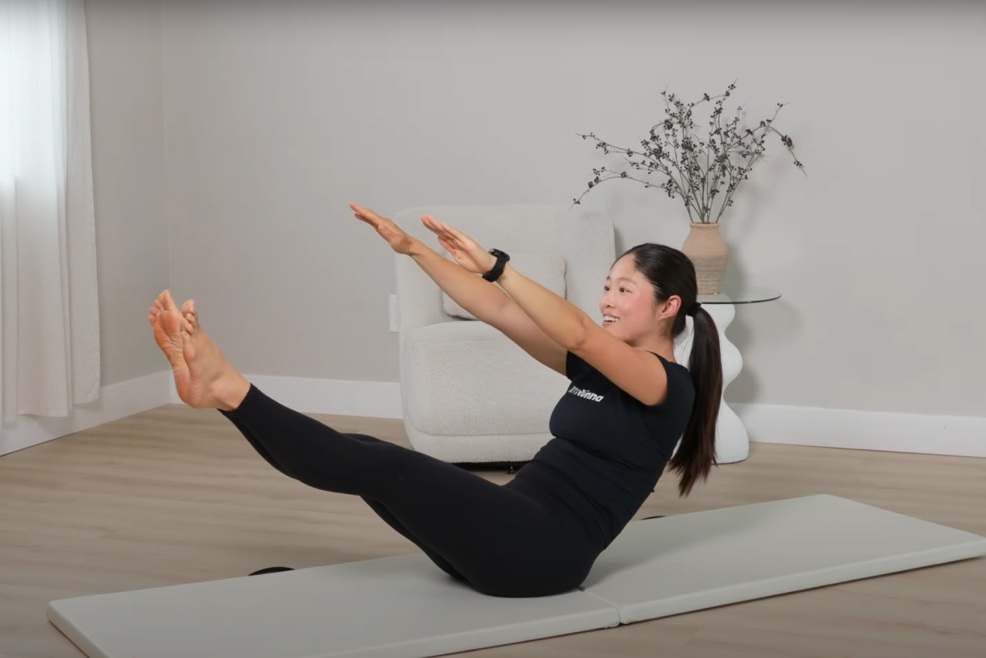
What are the benefits of Pilates for runners?
Pilates is a great way to support your running. It helps you build deep core strength, move more freely, and stay consistent with your training without adding more impact to your week.
At its core, Pilates is all about control, posture, and balance. It’s especially useful for runners because it improves how you move, helps reduce the risk of injury, and make you feel more in tune with your body.
Here’s what regular Pilates can do for you:
• Stronger core: Pilates targets your abs, hips, and back - all key muscles that support better posture and form.
• Better mobility and flexibility: It loosens tight hips, hamstrings, and lower back, making movement more fluid.
• Improved balance and control: Boosts stability and coordination, which is helpful for any running terrain.
• Injury prevention: Stronger stabilizing muscles mean less stress on your joints and fewer niggles.
• Breathing and focus: Pilates encourages deep, controlled breathing ideal for pacing yourself and staying mentally present on the run.
We’ve built the ideal 26-session Pilates program just for runners. You can access it through your Runna app alongside your weekly running schedule or revisit your favorite classes on YouTube.

Why choose our Pilates training plan?
No matter your distance or pace, we’ll give you the Pilates sessions that support every stride.
How to get started
No more guessing - Runna gives you a structured Pilates plan designed to support every run.
Choose your plan
Pick the Pilates Training Plan and it’s ready to slot right into your running plan and schedule.
Download the app
Download the app, log in, and you’ll have your full training plan - complete with runs, tips, and guidance - at your fingertips.
Move, move, move!
Simply tap ‘Go’ and follow along. Every session is laid out clearly, so you always know exactly what to do.
Hit that goal
Stick with your plan and week by week you’ll feel it - more strength, smoother movement, and easier running.
Tips for your Pilates training plan
These expert-backed tips will help you move better, build strength, and stay consistent. From nutrition and recovery to mindset and gear, discover just a glimpse of the guidance and coaching support you’ll access with a Runna Pilates training plan.
Nutrition
Pilates may not demand the same calorie burn as a long run, but nutrition still plays a big role in how well you move, recover, and adapt. The right diet supports muscle strength, keeps your joints healthy, and helps you show up to each session with energy and focus.
- Protein is key: Pilates works deep stabilizing muscles in your core, hips, and back. Prioritizing protein throughout the day gives your body the building blocks to repair and strengthen them.
- Steady energy from carbs: Complex carbs like oats, brown rice, quinoa, and sweet potatoes provide a slow release of energy - keeping you fueled without the spikes and crashes that can make movement feel sluggish.
- Healthy fats for joint support: Foods rich in omega-3s (like salmon, walnuts, and flaxseeds) and unsaturated fats (like olive oil and avocados) keep joints supple and reduce inflammation.
- Micronutrients matter: A colorful diet full of fruit and vegetables delivers vitamins, minerals, and antioxidants that support recovery and overall resilience.
- Hydration for movement quality: Staying hydrated is essential for keeping muscles pliable and joints mobile, both during Pilates and on your runs.
After a Pilates session - or especially if you’ve paired it with a run - refuel within an hour with a balance of protein and carbs. This helps muscles rebuild, stabilizes energy, and keeps you ready for your next session.
Pilates is about quality of movement - and nutrition is what underpins that quality.
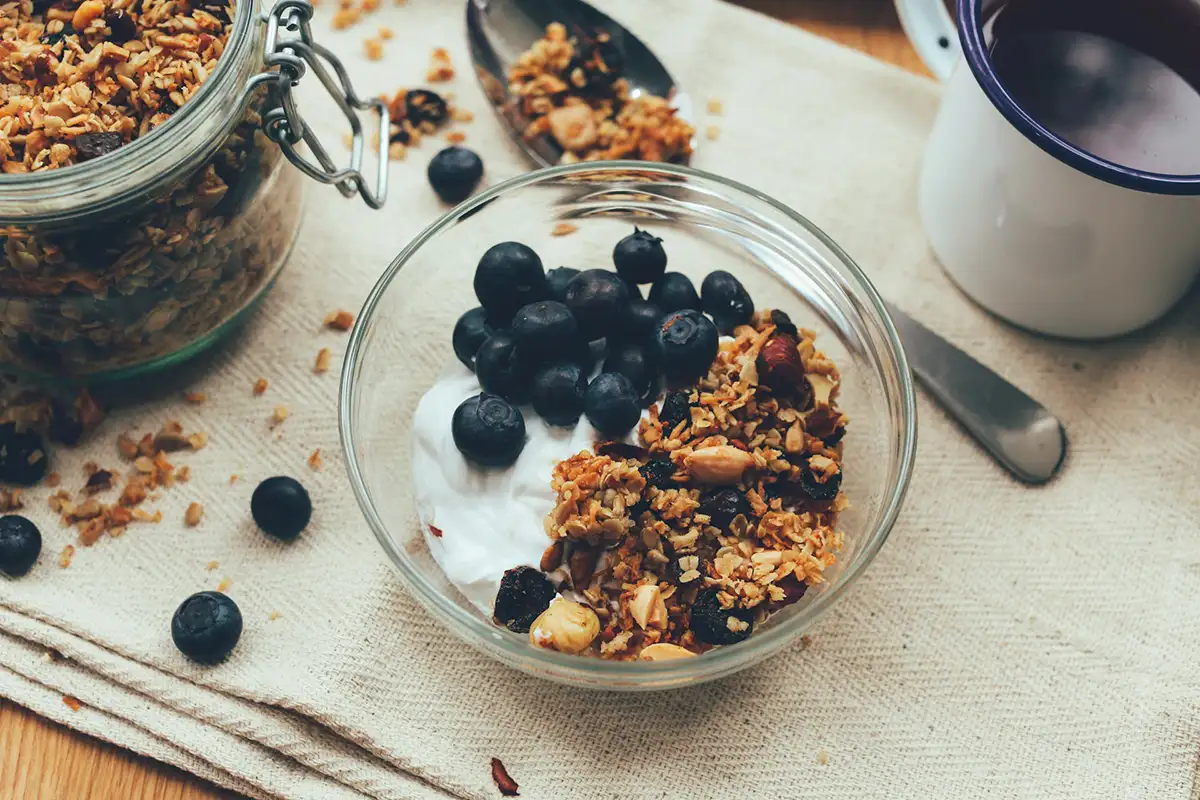
Cross-training and strength training
Pilates itself is a form of cross-training and strength work - building deep core stability, balance, and posture without adding impact to your week. But pairing it with other types of training can take your running even further.
Cross-training like cycling, swimming, or rowing builds cardiovascular fitness while giving your joints a break from pounding the pavement. Combined with Pilates, you’ll not only boost endurance but also move more fluidly, with the added mobility and control Pilates gives you.
Strength training in the gym develops power in major muscle groups - calves, quads, glutes, and hamstrings - while Pilates targets the deeper stabilizing muscles that hold your form together. Together, they’re the perfect match: strength gives you power, Pilates gives you control, and both reduce injury risk.
Even one Pilates session a week alongside strength or cross-training can make a noticeable difference in how strong, efficient, and resilient you feel when running.
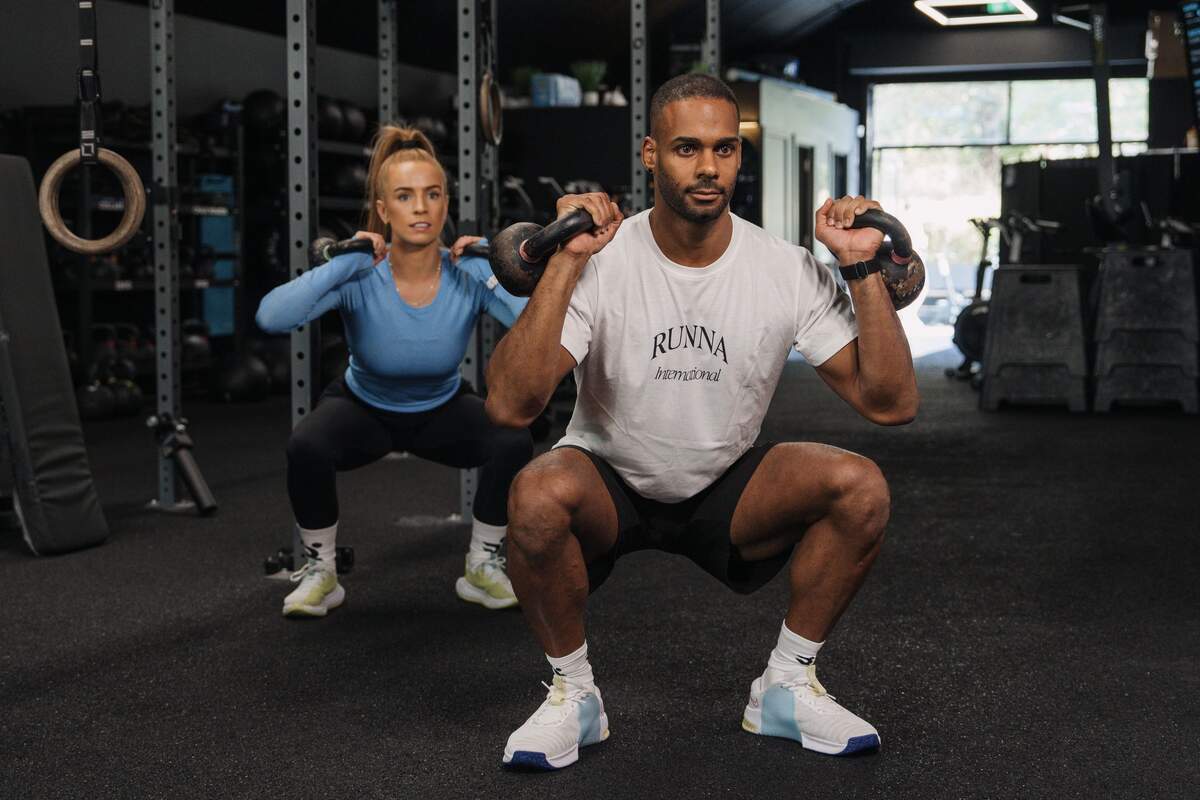
Headspace
In a sport where so much focus is on numbers - pace, distance, times - Pilates offers a chance to slow down, move with intention, and strengthen not just your body but your mind as well.
Each session encourages patience, awareness, and control. By focusing on precise movements and steady breathing, you learn to tune into how your body feels, spot imbalances, and notice progress in small, meaningful ways. This awareness builds confidence and consistency, keeping you motivated even when running feels tough.
Pilates also acts as a reset for your mind. The mindful pace helps you release tension, breathe deeply, and reconnect with your body - so you return to your running calmer, more composed, and ready to perform. Many runners discover it’s the balance they’ve been missing: a way to feel grounded, refreshed, and more resilient through the ups and downs of training.
By training your mind alongside your body, Pilates builds the resilience to stay consistent, overcome setbacks, and keep progressing long after motivation alone fades.
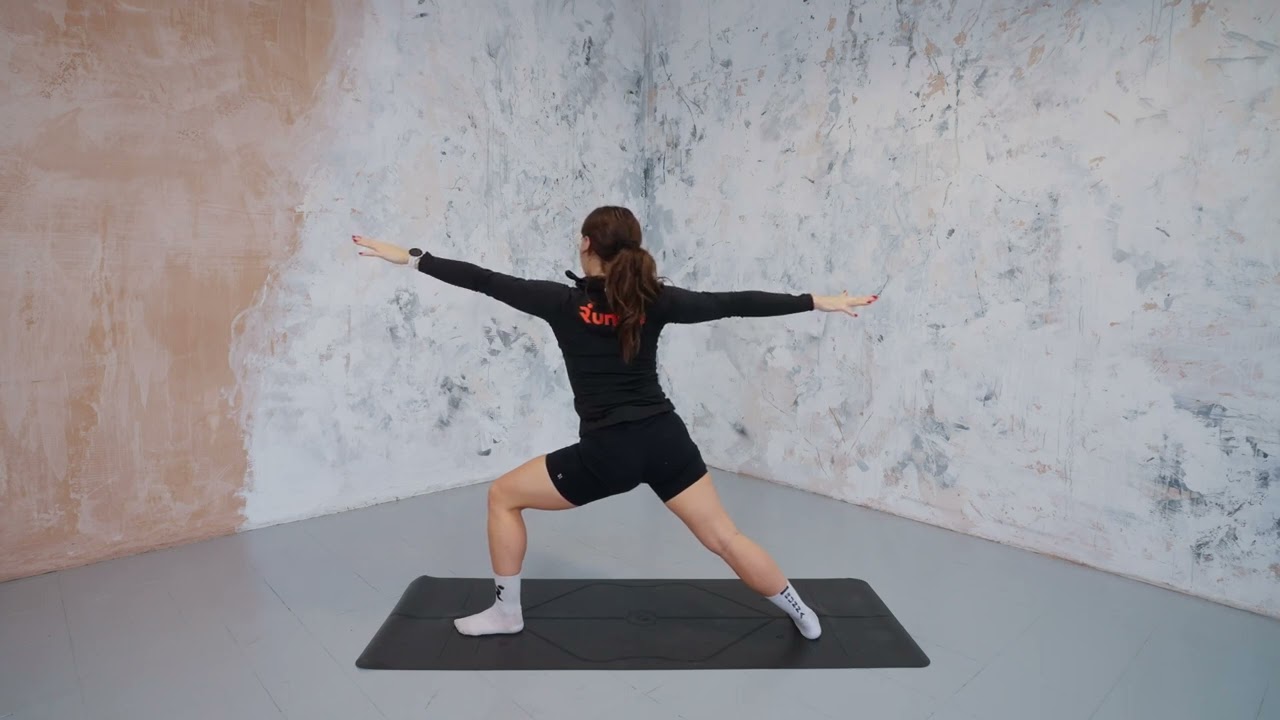
Form
Your movement form is just as important as your running form. How you align your spine, engage your core, and control each movement directly impacts how efficiently and safely you run.
Poor posture or weak stabilizers can lead to wasted energy, tightness, and a higher risk of injury over time. Pilates helps you reset these patterns and move with greater strength, balance, and awareness.
Practicing good form will:
- Strengthen your core, hips, and back so you run taller and more stable.
- Improve posture and alignment, reducing strain and wasted energy.
- Lower your risk of injury by correcting imbalances and improving control.
Good form isn’t about perfection - it’s about awareness and consistency. In each Pilates session, focus on:
- Standing tall with your spine long and your core gently engaged.
- Keeping shoulders open and relaxed while maintaining stability.
- Moving with precision and control, rather than speed or momentum.
- Coordinating steady breathing with each movement to stay mindful and connected.
Form takes time to build, and progress comes from small, consistent adjustments. The more you practice Pilates, the more natural good posture, efficient movement, and controlled running will feel - in training and in everyday life.
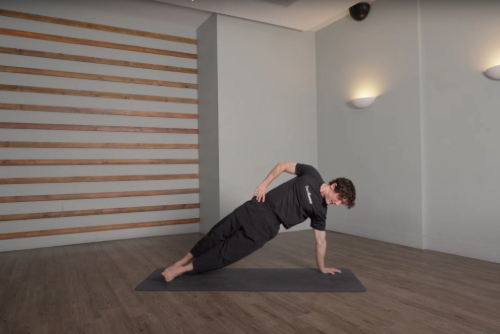
Recovery
Pilates is one of the best tools for building strength and stability, but it works best when supported by other smart recovery habits that keep your body balanced and resilient.
Here are some key things to focus on:
- Sleep: Aim for 7–9 hours each night. This is when your body repairs tissues, adapts to training, and restores energy—crucial for making the most of your Pilates sessions.
- Massage and tools: Foam rolling, massage guns, or the occasional sports massage can complement Pilates by easing tight muscles and improving circulation, especially in the areas you’re strengthening like your core, hips, and back.
- Nutrition and hydration: A diet rich in protein, complex carbs, and healthy fats supports muscle repair and keeps energy levels steady. Staying hydrated also ensures your joints and tissues stay supple for smooth, controlled movement.
- Active recovery: Light activities like walking, swimming, or yoga encourage blood flow and reduce stiffness, helping you feel fresher for both Pilates and running.
- Flexibility: Always listen to your body. If you’re unusually sore or fatigued, it’s better to rest or adjust than to push through and risk injury. Pilates is most effective when practiced consistently, not when forced.
Unlike race training, there’s no finish line here - Pilates is designed to support you week after week, helping you move better, recover faster, and keep your running strong for the long term.
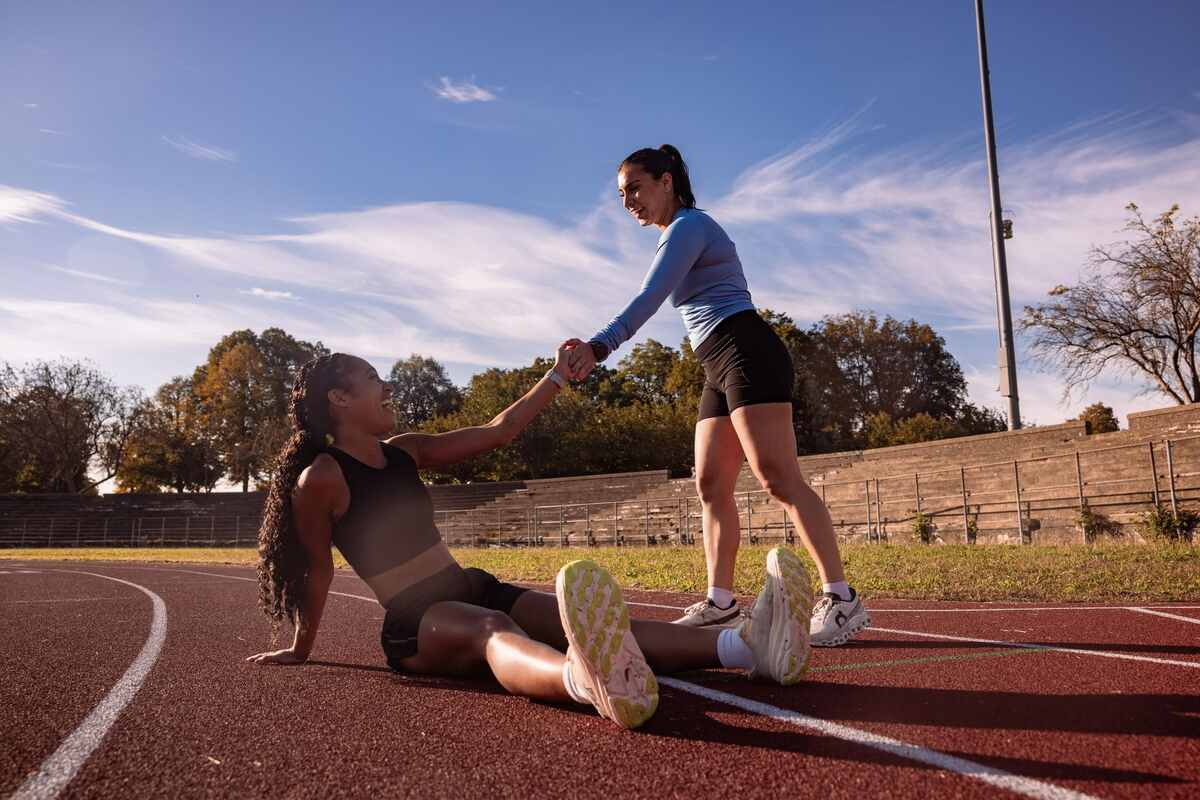
Gear
The setup you use for Pilates can make a big difference to both comfort and effectiveness. Here’s what to keep in mind:
- Mat: A quality yoga or Pilates mat gives you a stable, non-slip surface and cushions your joints during floor-based exercises.
- Space: Make sure you have room to stretch and extend freely - an uncluttered space helps you focus on control and precision.
- Props: While all sessions can be done without equipment, simple tools like resistance bands, Pilates rings, or small stability balls can add variety and progression.
- Clothing: Choose lightweight, flexible clothing that allows a full range of motion. Avoid anything restrictive around your core and hips, since these are key areas you’ll be engaging.
- Footwear: Most people prefer to practice Pilates barefoot or in grip socks for better stability and connection to the floor.
- Environment: Set the scene in a way that helps you tune in - whether that’s calm music, guided audio, or simply a quiet space.
The more comfortable and consistent your setup, the easier it is to stay committed to your Pilates practice week after week.
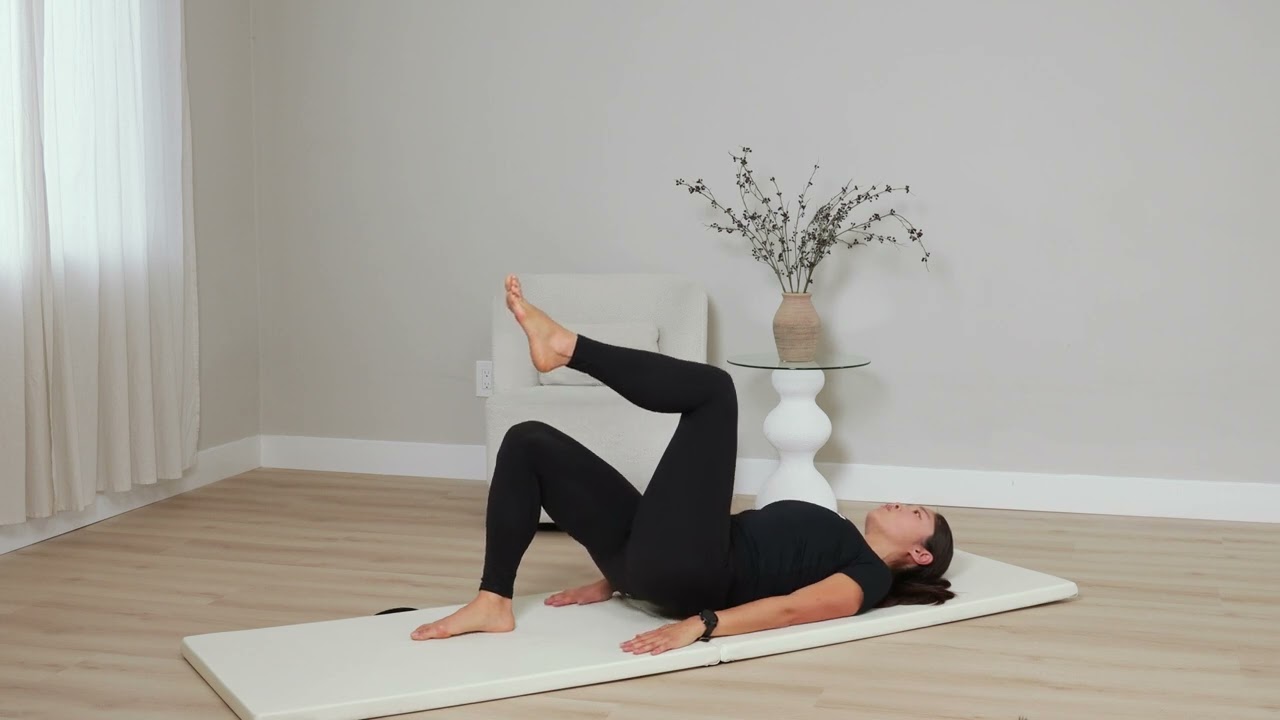
As featured in




Stories from Runnas
FAQ: All you need to know about Pilates training for runners
Is Pilates good for runners?
Yes, Pilates is excellent for runners. It enhances core strength and improves your flexibility and balance. This contributes to better running mechanics and helps reduce the risk of injuries related to poor form.
Which is better for runners, yoga or Pilates?
Both offer lots of benefits to runners, but Pilates might be slightly better due to its intense focus on core strengthening, alignment, and stabilization, which are all essential for your running efficiency.
Pilates exercises target the lower back, hips, and abdominal muscles, which support the spine and lower limbs during running.
That being said, yoga is also terrific for runners and helps improve your flexibility and balance. So, go with the type of activity you like best!
Is Pilates good for endurance?
Absolutely. Pilates improves breathing control and muscular endurance, which are key for making your long runs easier. It teaches you how to better control your breathing, which improves oxygen efficiency and stamina; core strength is also essential for endurance.
How often should runners do Pilates?
You can do Pilates between once and three times per week to start seeing its benefits on your running performance.
Some runners do light Pilates workouts daily, which can also be beneficial, as long as you’re mindful of your overall training volume and allow enough time for recovery between more intense sessions.
How do you combine running and Pilates?
Ideally, aim to do your Pilates workout on easy or rest days to optimize recovery and strength conditioning without overloading your muscles. This helps keep your body active while still focusing on recovery and mobility.
Inspiration

Introduction to Pilates Training for Runners
Pilates training can help improve flexibility and strength to help prevent injury and improve your running balance - here's why.

Stretching and Pilates Routines for Runners
Become more flexible and stronger with our stretching, mobility and pilates videos, specifically made for runners.

Top Tips to Maximize Your Recovery
Here are all of our top tips to help you recover from your tough sessions as quickly as possible and keep those injuries at bay.

